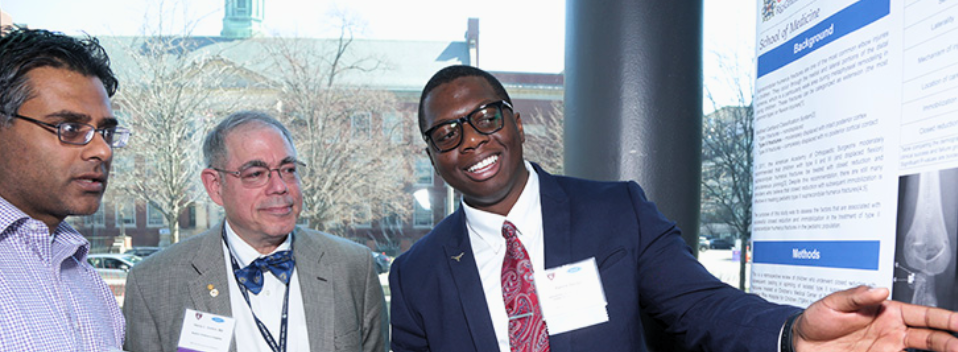
MEDI 9331 Scholarly Activities Clinical Years
Document Type
Article
Publication Date
10-2020
Abstract
The post-reconstruction appearance of mastectomy scars is a contributing factor that affects how patients perceive themselves after breast reconstruction.1 Patients that undergo a skin-sparing mastectomy (SSM) may often have a periareolar incision which can leave an unappealing transverse scar. Regardless of whether reconstruction is performed in a delayed or immediate fashion, the transverse mastectomy scar itself commonly lies in the center of the breast near the reconstructed nipple-areolar complex, causing psychological trauma and continued patient dissatisfaction.2 This also may lead to post-reconstruction multiple mastectomy scar revisions. This research aims to describe a novel technique to reliably avoid the presence of scars across the breast mound by progressively lowering the transverse mastectomy scar until it lies within the inframammary fold on patients undergoing expander-implant based reconstruction. Regardless of the grade of breast ptosis, the patient is marked to undergo the mastectomy through a transverse periareolar elliptical approach. Once the mastectomy has concluded and the expander/allograft is placed, the upper skin flap is transposed inferiorly as much as possible to be progressively lowered towards the anticipated inframammary fold. Intravascular flap analysis is performed following injection of indocyanine green to adjust the amount of tension and ensure adequate flap perfusion. The overlapped segment of the inferior mastectomy skin flap is de-epithelialized and placed under the superior flap to further increase blood flow along the closure and avoid the incision line to be under tension directly over the expander/allograft. If complete transposition of the scar to the inframammary fold was not achieved during the first stage of the reconstruction, the scar will be progressively lowered to the inframammary fold on subsequent stages following expansion. At that point the partially lowered incision is used as an approach, the skin is elevated at the same plane and re-advanced towards the inframammary fold in a similar fashion to end up at the level of the inframammary fold. Both trips to the operating room are often routine components of an expander-implant based technique. The reconstructive technique has been performed in 13 consecutive patients from April 2019 to December 2019.Three of them were unilateral and 10 bilateral for a total of 23 reconstructed breasts. 65% of the reconstructed breasts underwent immediate reconstruction and 35% were delayed. 40% of the breasts achieved transposition of the scar within the inframammary fold within the first stage. There has been no dehiscence or perioperative skin necrosis. Two patients had mild cellulitis that improved with oral antibiotics. Progressively transposing the transverse mastectomy scar towards the inframammary fold is safely performed through the already routine stages of a standard expander-implant based reconstruction and simultaneously improves the aesthetics of the breast.
Recommended Citation
Lopez, Annalisa, "Progressive Lowering of Transverse Mastectomy Scars onto the Inframammary Fold: A Novel Technique to Simultaneously Improve Cosmesis While Performing Implant-Based Breast Reconstruction" (2020). MEDI 9331 Scholarly Activities Clinical Years. 6.
https://scholarworks.utrgv.edu/som9331/6
Academic Level
medical student

